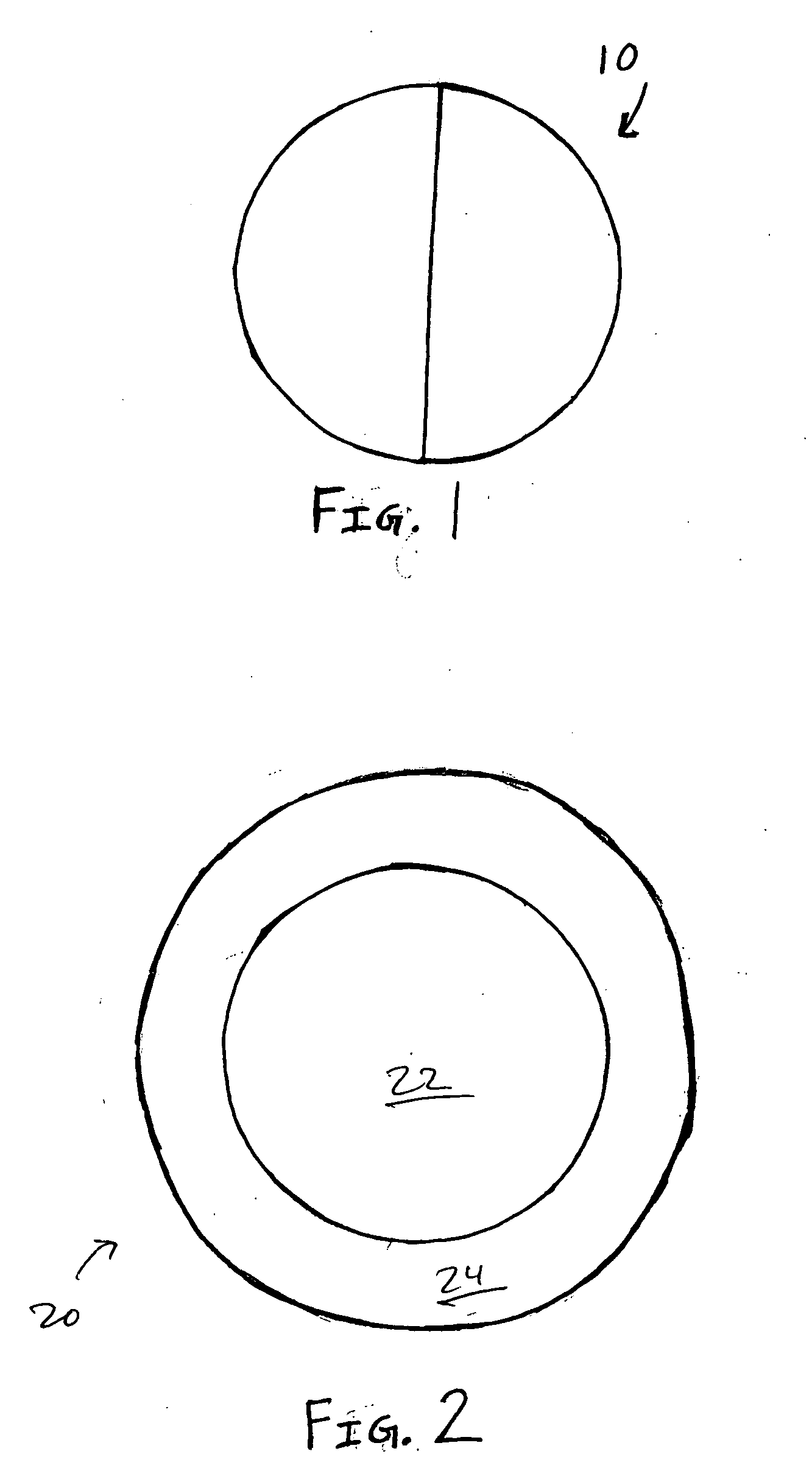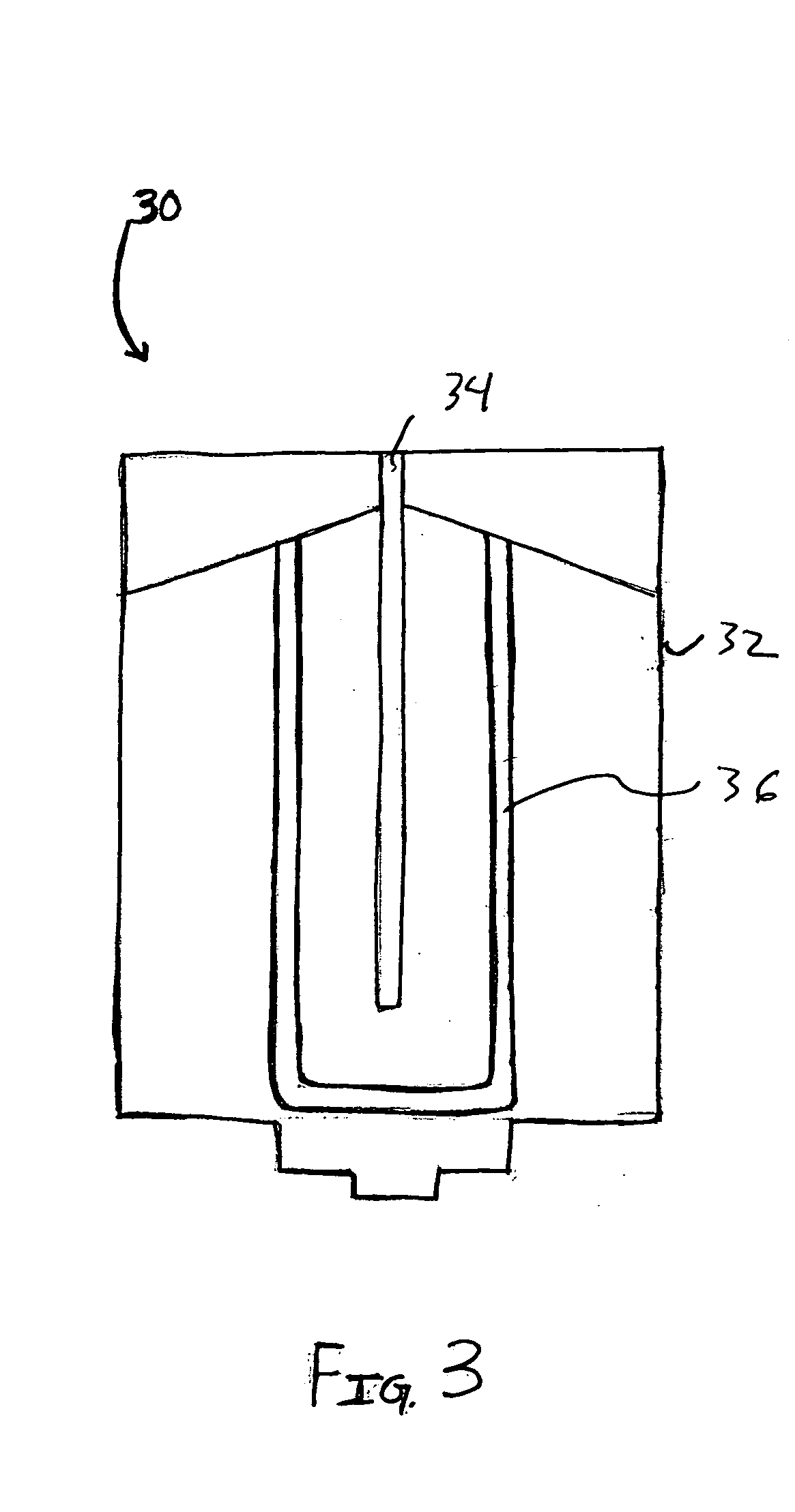Nonwoven fabric, fiber and galvanic cell
a nonwoven fabric and galvanic cell technology, applied in the field of alkaline batteries or cells, can solve the problems of inferior hydrolytic stability, poor wettability of alkaline electrolyte, and accelerated self-discharging, and achieve the effect of long service li
- Summary
- Abstract
- Description
- Claims
- Application Information
AI Technical Summary
Benefits of technology
Problems solved by technology
Method used
Image
Examples
Embodiment Construction
[0044] The present invention may be advantageously embodied and further refined in different ways. FIG. 1 shows a side-by-side multicomponent fiber 10 and FIG. 2 shows a core-sheath fiber 20 with a core 22 and sheath 24. FIG. 3 shows a galvanic cell 30 having a casing 32, a transport material 34 and a separator 36 made of nonwoven fabric according to the present invention.
[0045] A) Ammonia-binding polyolefin fibers were produced by way of example, using the following processes:
[0046] 1. Use of an acrylic acid-grafted polypropylene having an acrylic acid concentration of 5.5%.
[0047] Fibers were spun at extruder temperatures from 210-215° C. The spinning nozzle had an aperture of 450 μm. The polymer throughput rate was 0.11 cm3 / min per nozzle. The fibers were subsequently drawn with a draw ratio of 3 at temperatures of between 80 and 100° C. The resulting fibers had a titer of approximately 2.5 dtex; the ammonia absorption capacity was 0.58 mmol NH3 / g.
[0048] 2. Use of an acrylic a...
PUM
| Property | Measurement | Unit |
|---|---|---|
| thickness | aaaaa | aaaaa |
| diameter | aaaaa | aaaaa |
| temperatures | aaaaa | aaaaa |
Abstract
Description
Claims
Application Information
 Login to View More
Login to View More - R&D
- Intellectual Property
- Life Sciences
- Materials
- Tech Scout
- Unparalleled Data Quality
- Higher Quality Content
- 60% Fewer Hallucinations
Browse by: Latest US Patents, China's latest patents, Technical Efficacy Thesaurus, Application Domain, Technology Topic, Popular Technical Reports.
© 2025 PatSnap. All rights reserved.Legal|Privacy policy|Modern Slavery Act Transparency Statement|Sitemap|About US| Contact US: help@patsnap.com


